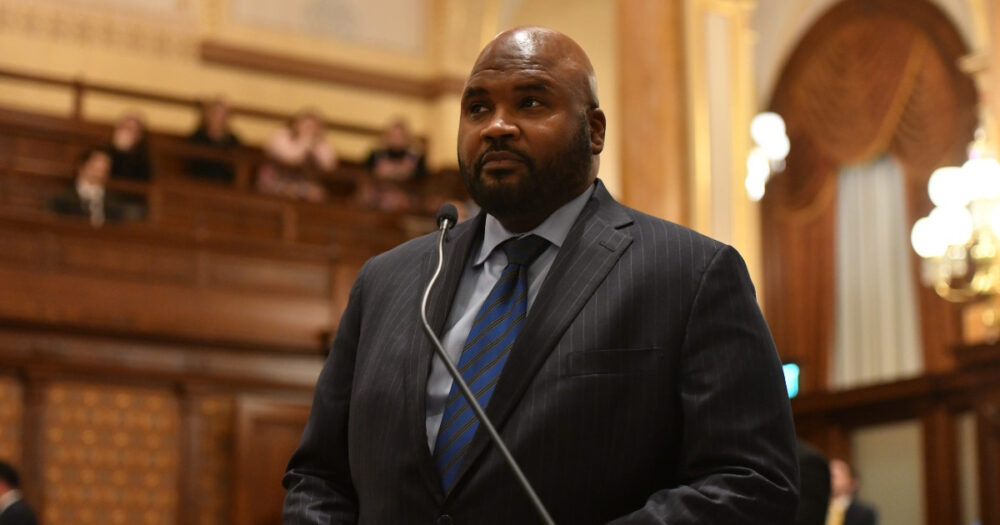WASHINGTON — Mary Jane Riva, CEO of the Pizza Factory, has a cautionary message for her customers this summer: Prepare to wait longer for your Hawaiian pie or calzone.
The Pizza Factory’s 100 West Coast locations are desperately short of workers. With about 12 employees per store, they’re barely half-staffed — just when many more Americans are venturing out to restaurant chains like hers.
Advertisement
“The days of 15-minute orders,” Riva said, “may not be happening anymore.”
Talk to other employers in America’s vast hospitality sector — hotels, restaurants, public pools, ice cream parlors, pick-your-own strawberry farms — and you’ll hear a similar lament. They can’t fill many of their summer jobs because the number of open positions far exceeds the number of people willing and able to fill them — even at increased wages.
Advertisement
Some help may be coming: School’s out for summer, cutting loose millions of high school and college students for the next three months. Riva, for one, is hoping to field more job applications from students seeking summertime spending money.
Teens are in an unusually commanding position — at least those among them who want a job. Researchers at Drexel University’s Center for Labor Markets and Policy predicted in a report last month that an average of 33% of youths ages 16 to 19 will be employed each month from June through August this year, the highest such rate since 34% in the summer of 2007.
Among them is Samuel Castillo, a 19-year-old four-year veteran of Miami’s Summer Jobs Connect program who’s already built an impressive resume. In one former job with the program, he worked in a legislative office, registering constituent complaints. His first summer, he saved $900 to buy parts to build his own computer.
Now, he’s studying computer engineering technology in college and working in the Jobs Connect program again this summer, earning $15 an hour teaching other students how to manage money.
“The goal for working is to pay my bills,’’ he said. “School costs money. Books cost money.’’
This year, for the first time in a couple of years, employers might get more help from overseas. After restricting immigration as a COVID-19 precaution, the government is beginning to loosen up: The U.S. Citizenship and Immigration Services has raised the limit on H-2B temporary work permits — used for seasonal work — by 35,000 visas.
Cape Resorts, which operates several boutique hotels, cottages and restaurants in Cape May and elsewhere in New Jersey and New York, will employ about 120 international students this summer on J-1 visas, work permits that also serve as a kind of cultural exchange program. The company employs about 950 staffers.
“Finding staff that are eager to fill hospitality roles remains a challenge,” said Cindy D’Aoust, a company executive. “But it is great to see the return of our international students as well as returning college students for the summer season.”
Advertisement
Still, today’s level of teen employment isn’t close to what it used to be. In August 1978, 50% of America’s teenagers were working. Around 2000, teenage employment went into a decade-long slide. In June 2010, during the agonizingly slow recovery from the 2007-2009 Great Recession, teenage employment bottomed at 25% before slowly rising again as the economy recovered.
It was more than economic doldrums that kept teens away from work. Longer-term economic forces and changing personal choices contributed, too. The U.S. economy now offers fewer low-skill, entry-level jobs — ready-made for teens — than in the 1970s and 1980s. Many such jobs that do remain, from supermarket clerk to fast-food burger flipper, are increasingly likely to be taken by older workers, many of them immigrants.
And many teens from affluent families, eyeing admission to top universities, have chosen to forgo summer jobs for summer school or volunteer work that bear mention on college applications. Others now spend their summers playing sports.
But COVID and its economic damage changed everything. At first, the economy collapsed as businesses locked down and consumers hunkered down at home. Soon, vast federal aid and ultra-low interest rates ignited an unexpectedly fast recovery. Businesses scrambled to recall employees they had laid off and to find new ones to keep up with resurgent customer orders.
The U.S. unemployment rate has dropped to 3.6%, just above a half-century low. This week, the government reported that employers posted 11.4 job openings in April, down from a record 11.9 million in March but still extraordinarily high. On average, there are now roughly two jobs available for every unemployed American.
Suddenly, teenagers are in much greater demand. And the pay available to them — $15 or $16 an hour for entry-level work — is drawing some back into the job market. Teenage employment has already topped pre-pandemic levels even though the overall job market still hasn’t.
Advertisement
With desperate employers jacking up hourly wages, many teens can take jobs that pay better than the usual seasonal openings at summer camps, RV parks, and resorts, said Julia Pollak, an economist at ZipRecruiter.
“We have this big gap in the market now,” she said. “There are no takers for jobs that are typically given to teens for pocket money.”
It’s become a serious headache for Melissa Mroczek, who owns Nomad Wax Co., which makes soy candles and scented products in Omaha, Nebraska. Mroczek has been struggling to fill a position for a paid marketing intern. A few candidates showed interest. Two got to the hiring stage — and then disappeared, even though Mroczek is offering above minimum wage pay, plus school credits and a flexible schedule.
Never in her four years of running Nomad Candle, and 15 years before that as a hiring manager for a national financial services firm, has Mroczek had so much difficulty hiring.
“We still haven’t filled it, and at this point we may not be able to,” she said. “So we may look to find a high school student or try to move this to the fall semester instead and work directly with a professor to offer course credit.”
For teens who do want to work and have their choice of jobs, economists and other analysts welcome the reversal in fortune. Summertime jobs give young people experience and make it more likely they will work later in life, the Drexel researchers say — good news for a U.S. labor force that is losing the vast baby boom generation to retirement. Entry-level jobs also give teens the opportunity to learn how to handle money and to mingle with colleagues and customers from diverse economic and cultural backgrounds.
Advertisement
Lauren Gonzalez, who operates two hostels with her sister — The Local in New York and Lolo Pass in Portland, Oregon — is looking for a barista, a bartender, an events manager and a sales manager. She recently raised pay for housekeepers and receptionists, jobs that she had previously had little trouble filling.
“I definitely throw my hands in the air sometimes and say: ‘Where is everyone?’ “







